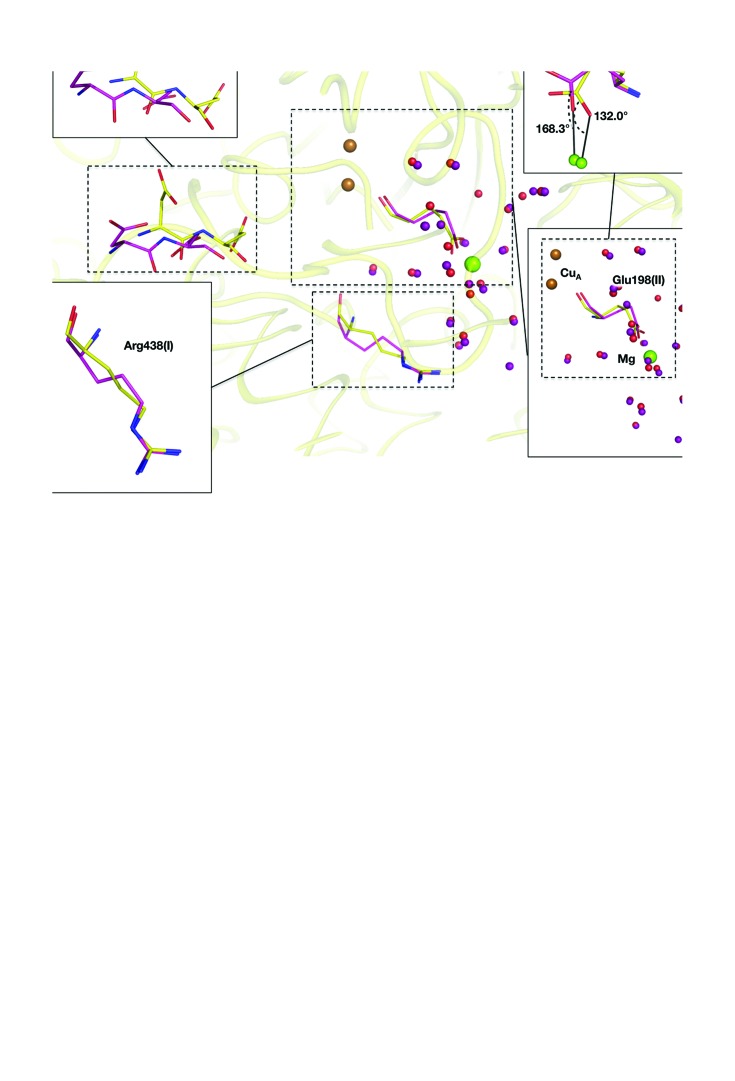Figure 2.
(a) Structural differences between the two oxidation states shown as ball-and-stick models. N and O atoms are shown in blue and red, respectively. Green and brown spheres indicate magnesium and copper ions, respectively. Protein C atoms are in yellow and pink for the oxidized and the reduced forms, respectively. Red and purple spheres indicate waters in the oxidized and the reduced states, respectively. Asp51 moves towards the molecular surface upon reduction of the metal centres. Glu198 bridges CuA and the magnesium ion, and changes its coordination angle upon the redox change. (b) Structures of haem a, haem a 3 and helix X of the oxidized and reduced states superposed by least-squares fitting of the main-chain atoms of subunit I (subunit A in the PDB structure) are shown as stick models, as in (a). The structures are at pH 7.3. The capital letters A, B, C and D indicate the pyrrole-ring names according to the PDB definition. Top right: close-up view of hydrogen bonds involving the propionate O atom of the reduced state at pH 7.3. Bottom right: close-up view of close contacts of the terminal part of the hydroxylfarnesylethyl group and amino-acid residues of the reduced state at pH 7.3. A black line indicates close contact within 4.0 Å between an atom of the hydroxylfarnesylethyl group and an amino acid.

